
This coming weekend the fledgling Alliance of American Football was supposed to kick off the first of two rounds of playoff games leading up to the league’s inaugural championship game April 27 in Frisco, Tex.
The Arizona Hotshots and San Antonio Commanders appeared set to duel it out for the West Division championship while the Orlando Apollos and Birmingham Iron were in line to battle for rights to represent the East Division in the title game.
The key word here remains “supposed to.”
The eight-team start-up league unexpectedly ceased operations on April 2 after eight weeks of play, cancelling the final two weeks of regular season play and the entire championship playoffs.
Rushed to market by co-founders Charlie Ebersol and Bill Polian in an apparent effort to beat the return of the XFL in spring 2020, the AAF proved to be critically underfunded and survived only as long as it did to the major infusion of funds from billionaire Tom Dundon, owner of the NHL Carolina Hurricanes.
Dundon contributed $70 million out of a pledge of up to $250 million to meet payroll in the AAF, which was trying to establish itself as a feeder league to the NFL.
Dundon bought into the idea of being a minor league development league to the granddaddy of all professional football leagues. In order to better accomplish that goal, he wanted some of the NFL’s young prospects to play in the league in which he essentially became controlling owner.
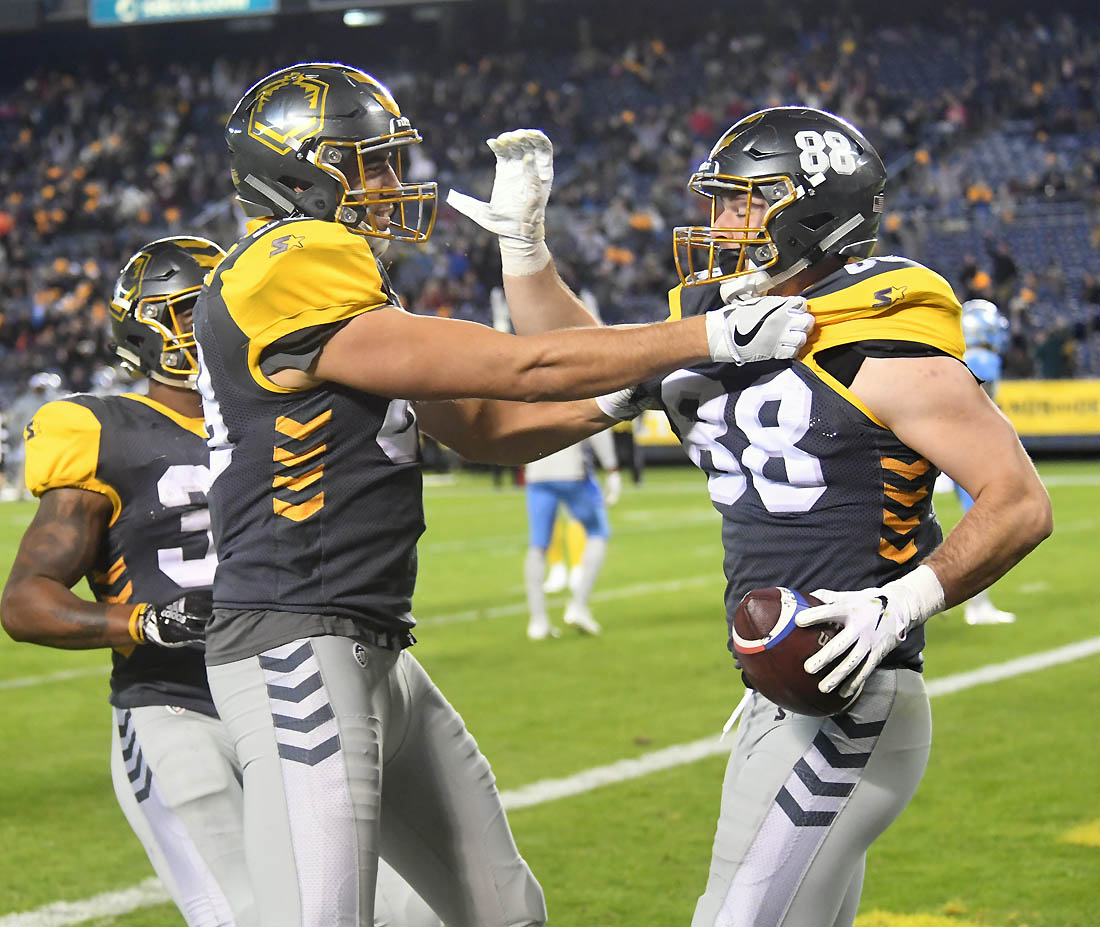
Dundon wanted to use players off NFL practice squads, giving them additional exposure in the AAF prior to the start of summer training camps. But Dundon ran up against resistance from the NFL’s Player Association, which wasn’t prepared to give the OK to such a plan so quickly due to injury concerns.
Dundon promptly withdrew his investment in the AAF, which forced the league to cease operations without additional funding.
The AAF released the following statement on its website:
“This week, we made the difficult decision to suspend all football operations for the Alliance of American Football. We understand the difficulty that this decision has caused for many people and for that we are very sorry. This is not the way we wanted it to end, but we are also committed to working on solutions for all outstanding issues to the best of our ability. Due to ongoing legal processes, we are unable to comment further or share details about the decision.
“We are grateful to our players, who delivered quality football and may now exercise their NFL-out clauses in our contract. We encourage them to continue pursuing their dreams and wish them the best. We are grateful to our fans, who have been true believers from the beginning, and to our world-class partners. And to the Alliance coaches and employees who devoted their valuable time and considerable talent to this venture, we are forever grateful.”
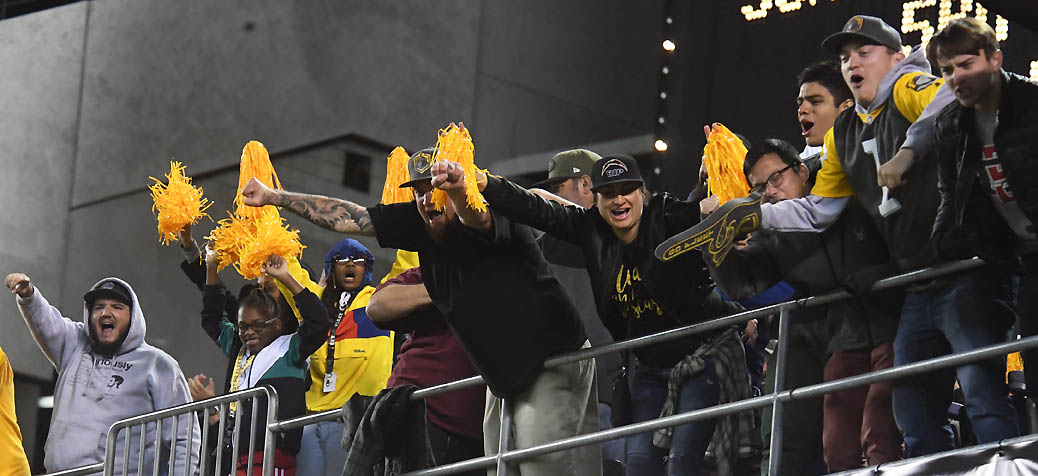
Polian said he was extremely disappointed to learn that Dundon had decided to suspend all football operations of the Alliance.
“When Mr. Dundon took over, it was the belief of my co-founder, Charlie Ebersol, and myself that we would finish the season, pay our creditors and make the necessary adjustments to move forward in a manner that made economic sense for all,” Polian told the media. “The momentum generated by our players, coaches and football staff had us well positioned for future success. Regrettably, we will not have that opportunity.”
AAF management had originally hoped the leaue could work out a deal with the NFLPA three to four years down the line. But Dundon apparently wanted it sooner.
In the meantime, the AAF was pressed to start with whatever was available, which was essentially NFL practice squad cast-offs and free agents.
That was the selling point of the AAF, however. The league wanted to provide a playing field where players could work themselves back into the NFL. It was a grand idea and it seemed to be working, even for embattled quarterback Johnny Manziel, who played two games with the Memphis Express.
A number of standouts in the AAF began to receive notice from NFL teams and, when the league ceased operations, NFL teams began signing former AAF standouts.
It hasn’t been a flood of players but the league seems to have served its purpose. The concept proved to be sound even though the financial aspects weren’t.
Two days after ceasing operations, the AAF authorized its players to sign with NFL teams.
Among the first to sign were Orlando cornerback Keith Reaser (Kansas City Chiefs) and Apollos quarterback Garrett Gilbert (Cleveland Browns).
Reaser, a fifth-round draft pick by the San Francisco 49ers in the 2014 draft who spent five years in the NFL, most recently with the Chiefs.
Gilbert led the AAF with 2,152 passing yards while tossing 13 touchdowns in running the league’s top offense.
The NFL’s Minnesota Vikings picked up two players from San Antonio: safety Derron Smith and cornerback Duke Thomas. Cornerback De’Vante Bausby, another former Commander, signed with the Denver Broncos after leading the AAF with four interceptions and x pass break-ups.
The NFL’s Carolina Panthers announced the signing of two players: offensive linemen Kitt O’Brien from Birmingham and Parker Collins from the Atlanta Legends.
The Pittsburgh Steelers announced the signing of two former Iron players: center J.C. Hassenauer and defensive back Jack Tocho.
Closer to home, the San Diego Fleet managed to funnel several players back to the NFL: defensive end Alex Barrett (Oakland Raiders), defensive lineman Damontre Moore (San Francisco) and cornerback Kameron Kelly (Pittsburgh).
Barrett and Kelly are both former San Diego State Aztecs.
Moore, who had previously appeared in 54 NFL games with 63 tackles and 10 sacks, recorded 7.5 sacks and a team-leading 39 total tackles in eight games with the Fleet.
Kelly earned AAF Defensive Player of the Week honors in Week 5 after recording three interceptions, including one for a touchdown return of 22 yards. In eight games with the Fleet, Kelly racked up four interceptions to tie for the league lead.
Former Southwestern College signal-caller Luis Perez signed with the Philadelphia Eagles after ranking third among AAF quarterbacks with 1,460 passing yards. The Otay Ranch High School alumnus completed five touchdown passes on the season for Birmingham while throwing six interceptions.
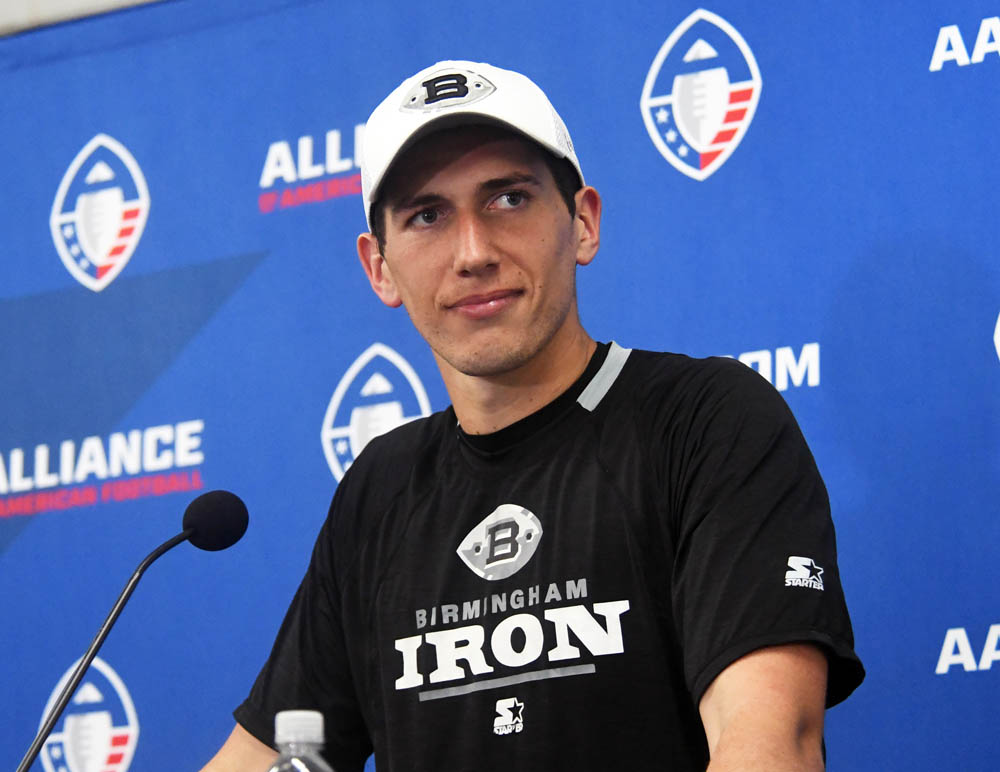
Perez, the 2017 NCAA Division II Player of the Year for Texas A&M-Commerce’s national championship team, completed 52.3 percent of his passes, rushed for 75 yards on 24 attempts and was sacked 11 times for an overall 66.1 quarterback rating.
While able to connect on deep passes, Perez’s forte seemed to be high percentage short-yardage passes. Still, it was obvious he was prone to rookie mistakes and uneven play forced him to be pulled from two games.
He did not look comfortable running the football when chased from the pocket.
His final AAF game was not necessarily memorable. Perez started but did not finish the Iron’s 17-9 victory against the visiting Legends in front of a season-high gathering of 17,328 fans March 31 in Alabama. He completed 10 of 24 passes (41.7 percent) for 65 yards, did not throw a touchdown or interception, and was sacked three times for a 49.3 rating.
He posted a miserable 10.7 QB rating in a 31-14 loss at Orlando on March 9 in which he completed three of seven passing attempts for four yards with one interception.
He completed 27 of 49 passing attempts (55.1 percent) for 359 yards with three touchdowns and two interceptions to compile an 81.9 passer rating in the win over the Fleet, a game in which he did not start.
Perez competed a two-point conversion to receiver Quinton Patton after former NFL Indianapolis Colt Trent Richardson had scored his 11th rushing touchdown of the season on a two-yard run.
Perez did get his so-called 15 minutes of fame by leading Birmingham to a 33-29 walk-off victory against the Fleet in a personal homecoming game in front of a large contingent of supporters March 17 at SDCCU Stadium.
He called the AAF a league of opportunity, and was grateful for the chance to play in it with the opportunity to further develop his playing skills and decision-making. It would have been interesting to see what his final numbers would have been with a few more weeks of development, which is what the AAF was there for.
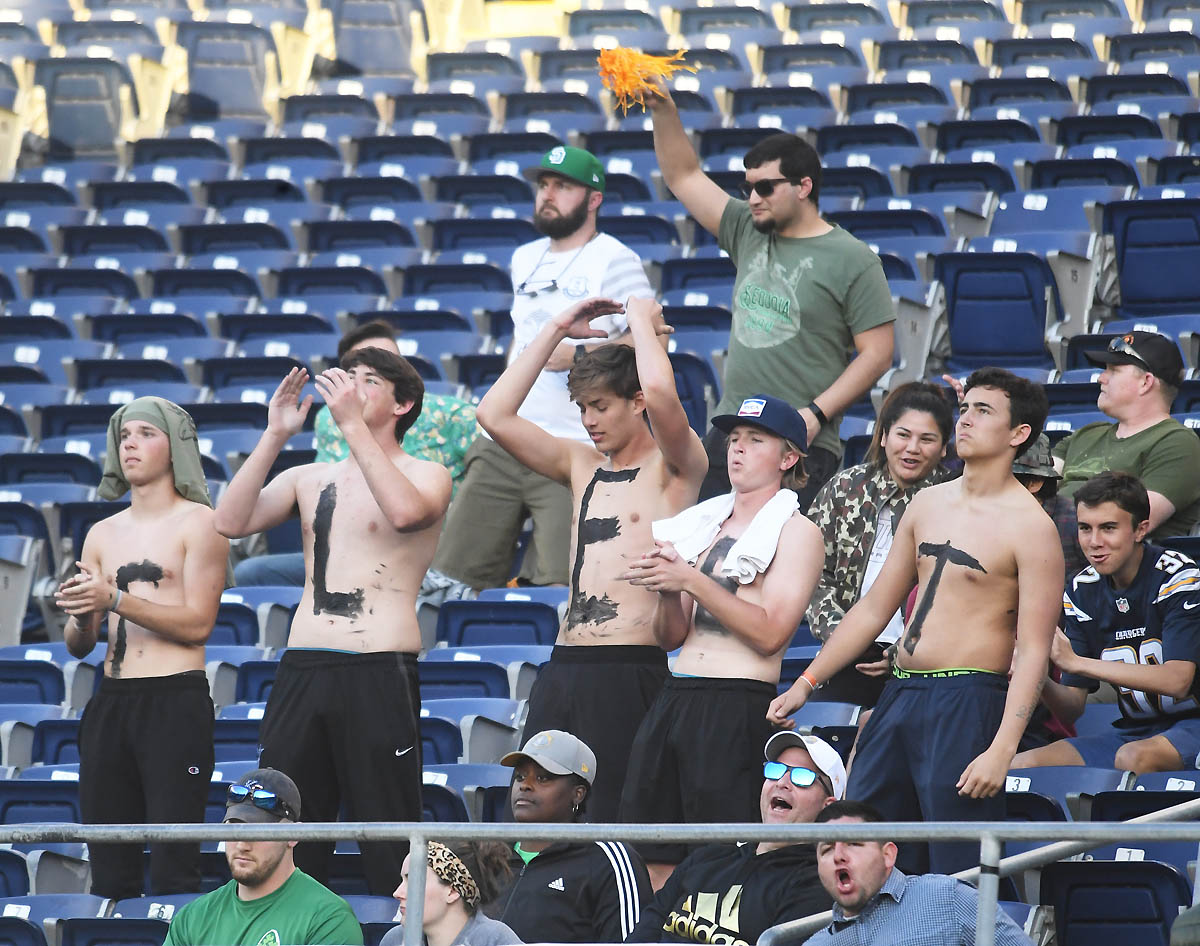
Out to sea
The Fleet appeared to be one of the AAF’s more successful franchises at the gate, setting records for home attendance in its last two home games by drawing 20,823 fans against the Salt Lake Stallions on March 9 and 20,986 against Birmingham
The Fleet (3-5) was scheduled to host the Hotshots in its final home game of the season on April 14.
As it turned out, the Fleet dropped out of playoff contention by losing its final three games. After dropping the heartbreaker to the Iron, the Fleet lost 32-15 in Arizona on March 24 and 8-3 at Salt Lake on March 30.
San Diego was scheduled to play at high-powered Orlando on April 6 before the league pulled the plug on its inaugural season.
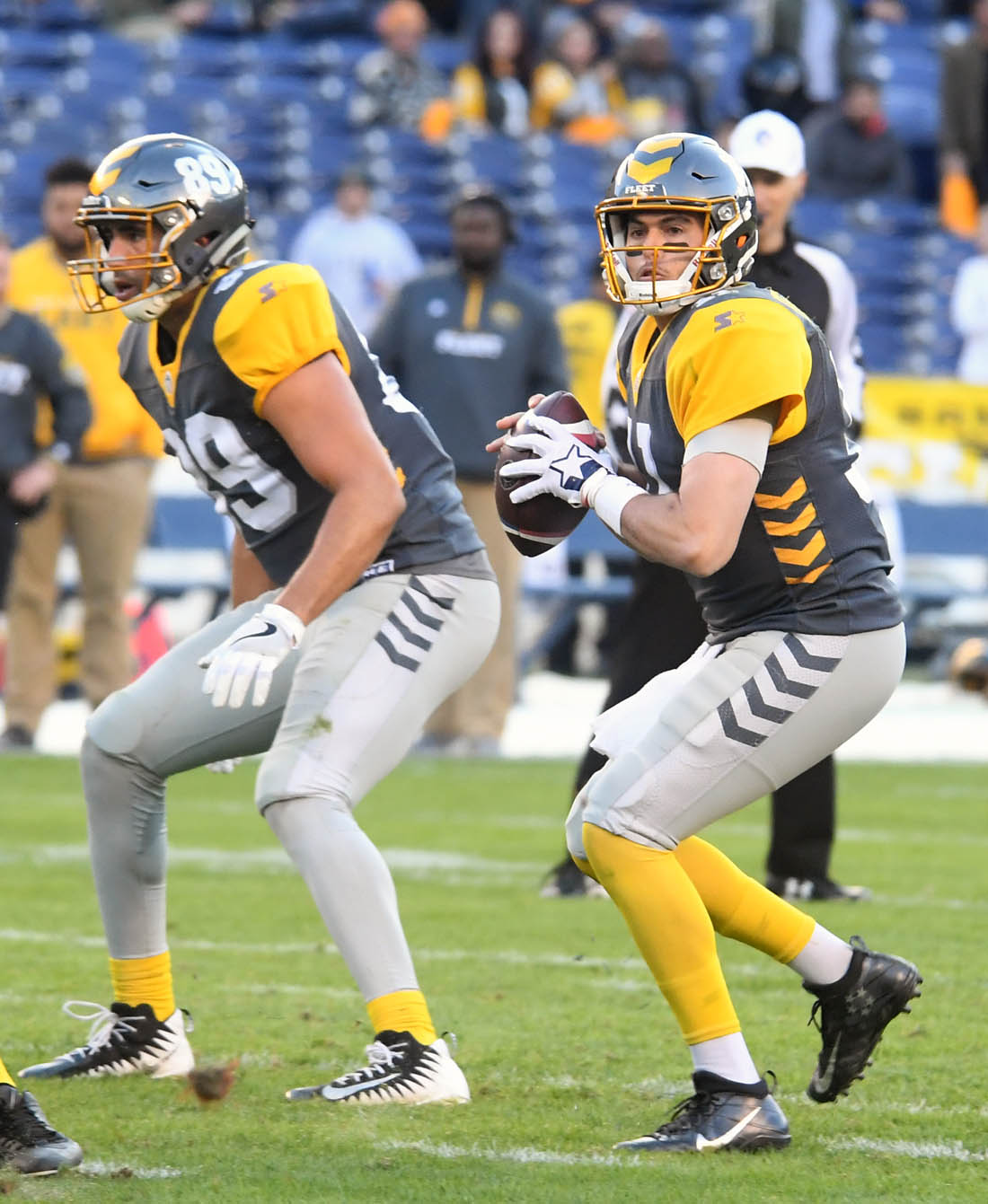
Statistical leaders for the short-lived Fleet included quarterback Mike Bercovici with 1,311 passing yards, running back Ja’Quan Gardner with 311 rushing yards and receiver Dontez Ford with 435 receiving yards.
Gardner was a fan favorite due to his small size but big heart.
Overall, the Fleet featured eight former Aztecs on its roster. Kicker Donny Hageman was one of four AAF kickers to make 14 field goals during the shortened season.
Fleet general manager Dave Boller made the following tweet:
“To everyone from the players to the janitorial staff, I want to thank you guys for giving your all for (the Fleet), the fans and the city of San Diego. I’ve had so much fun being your general manager, that I’m sad that it has to end.”
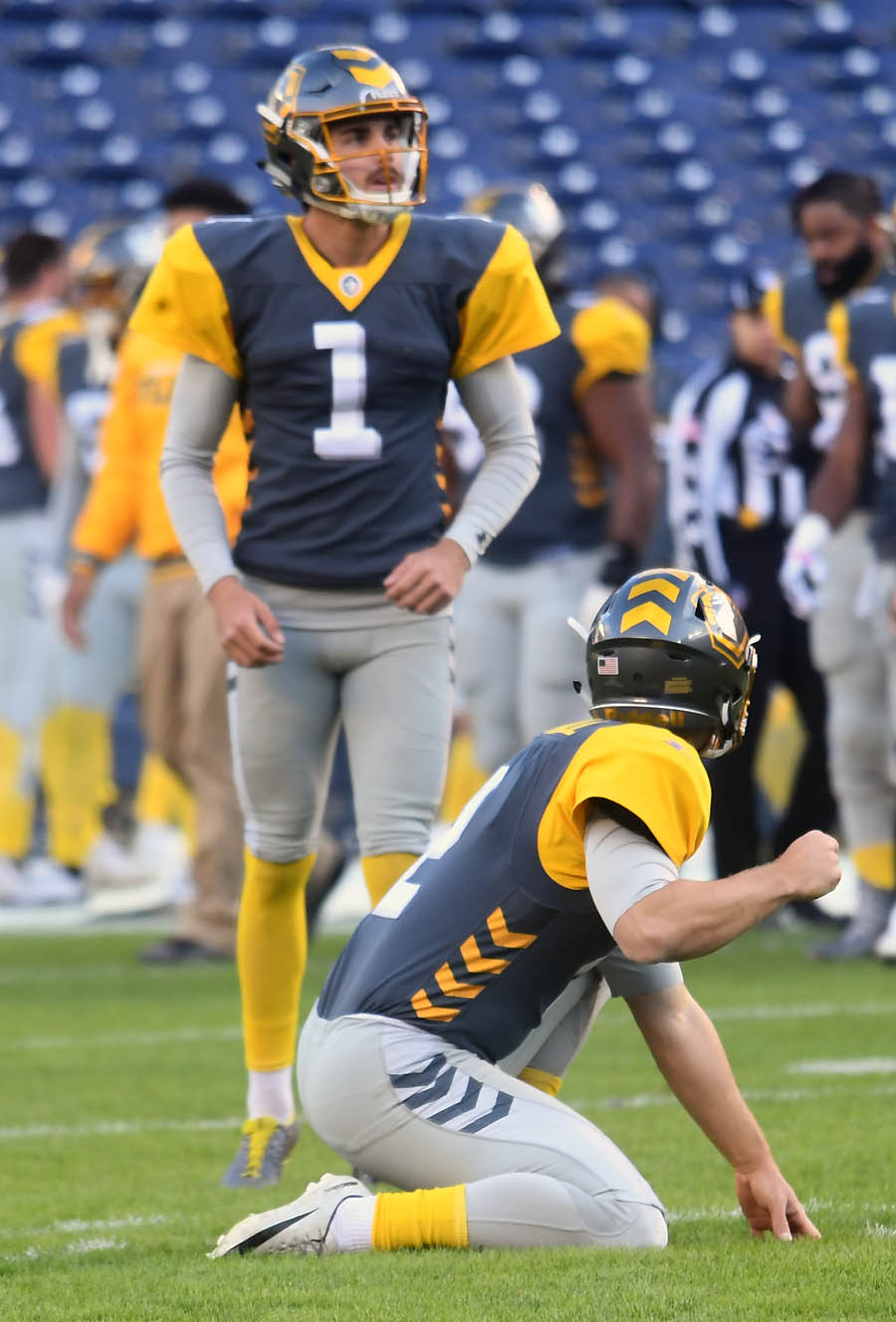
What’s next
Ebersol and Polian haven’t folded their league yet but have left open the possibility of a return to play for a second season if additional funding can be found. That would put the league in direct competition with the XFL, which founder Vince McMahon said he is prepared to invest as much as $500 million in capital in the revived league (which originally ran one season in 2001).
The AAF 2.0 would be hard-pressed to match that. It couldn’t do that even with a year head start on the XFL, which will feature eight teams spread across a national landscape playing a 10-week regular season schedule..
The XFL is going for cities either with current NFL team or a recent NFL presence. Teams are located in Dallas, Houston, Los Angles, New York, Seattle, St. Louis, Tampa Bay and Washington, D.C.
All we can do is wish all the former AAF players luck in finding new jobs and hope the XFL is more fiscally sound in its game plan.

Getting their kicks: Strike Force scores first franchise win
The San Diego Strike Force ended a six-game losing streak by defeating the Cedar Rapids River Kings, 40-34, in front of 1,603 fans Sunday (April 14) at Pechanga Arena San Diego. It was the first win in franchise history for the Indoor Football League expansion team.
Ernesto Lacayo earned the league’s special teams player of the week award after providing the difference in the game by recording the only points in the third quarter on field goals of 51 and 43 yards to boost the Strike Force to a 40-21 lead.
Lacayo also recorded four of five extra points attempts. Lacayo currently ranks second among kickers with 59 points and leads all kickers in extra point percentage (97 percent).
Strike Force quarterback Jihad Vercher completed 12 of 19 passing attempts for 114 yards and two touchdowns while running back George Moreira Jr. gained 58 yards on 18 carries and scored one touchdown.
Vercher also rushed for eight yards and a touchdown. Wide receiver Marques Rodgers (four carries, 30 yards) scored one rushing touchdown while also scoring a receiving touchdown as he reeled in six catches for 43 yards.
Strike Force wide receiver David Carter had one catch for a 45-yard touchdown to end the half.
Rodgers earned honorable mention honors in the league’s weekly player of the week balloting.
Cedar Rapids quarterback Kurt Palandech went 11 for 15 with 134 yards and one touchdown in the loss. River Kings running back Nathaniel Chavious had 24 rushing yards on 10 carries and scored three touchdowns. Cedar Rapids wide receiver Jordan Smith caught five passes for 59 yards and had one touchdown in the game.
The Strike Force was coming off a 91-58 loss to the host Arizona Rattlers on April 6 in front of 14,424 fans in Phoenix.
“It was a different atmosphere tonight as our players have the chemistry to cheer each other on when we started no one was supportive of each other at the beginning of the year,” Strike Force head coach Burt Grossman told the media after his team’s history-making win over Cedar Rapids. “They get along well like family.
“Last week we played the Arizona Rattlers as they are the dynasty of the Indoor Football League for 30 years.”
The Strike Force will face the Rattlers on Monday, April 22, at Pechanga Arena San Diego. Kick-off is 7:05 p.m.
David Willauer contributed to this report.











